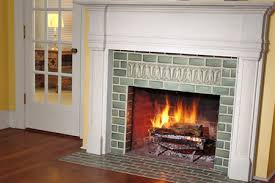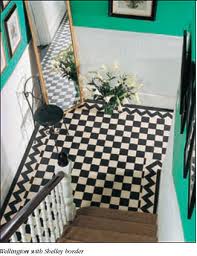Everyone knows that tiles are the most commonly used surface covering in bathrooms and kitchens. But why tiles? And why those rooms in particular? Tiles are one of the best wall and floor coverings because they are so hard wearing, practical, durable and easy to clean. Tiles don’t fade, peel, stain or rot, so they are suitable for environments where they are subject to residue. This makes them ideal for the kitchen, where food and water may get splattered on walls, and also in bathrooms where they are subject to smatterings of water and toiletry products. However, tiles can be used in other practical environments too, and even not-so-practical rooms for a more aesthetic effect. Below we list some alternative locations to display wall tiles.
Just like bathrooms and kitchens, hallways are highly practical places. Hallways can get grubby quite easily; especially when people rub against the walls – over time wall paper becomes stained. Halls are subject to dirty shoes, coats, soggy umbrellas, heavy bags and possibly prams, sports gear and pets; so they can become messy places. By tiling the bottom half of the walls you can create a space that is very easily maintained and stain resistant. Choose a ceramic tile, as these come in matt finishes and many different colours; like the Hall tile range.
Pantry/ Larder/ Utility Room
As its name suggests, the utility room is a highly utile place, reserved for domestic chores and storage. You may have the washing machine in there, which means both dirty and clean clothes will be on the surfaces; not to mention detergents. Having tiled walls means that they can easily be wiped down and they last far longer than wallpaper. You could also use them as a splash-back if you have a sink. Choose a smart gloss ceramic tile such as Edge.
Conservatory
Although this seems like a strange choice it can really add a contemporary look to your room. Because you only have one main wall in a conservatory, as the others are primarily glass, why not make the most of it by covering it in a durable but beautiful material? As a mark of your move from the main house interior to a room that’s half inside and half a part of the garden, choose a natural cladding such as slate tiles. Because the wall of a conservatory is exposed to so much direct sunlight, paint or wallpaper will eventually fade, but this won’t happen with natural tiles.
Living Room
 The living room may sound like an odd place to place wall tiles as it is associated with soft furnishings, warmth, comfort and relaxation. But if your living room contains a fireplace it will benefit from the heat resistant, wipe-down characteristics of tiles. You can tile just around the fireplace opening, or all the way up the chimney breast, and for wood burning stoves you can tile in the flue alcove. There are two popular material options for this: you can use natural stone cladding like quartzite tiles or slate, or you could use ceramic tiles. Hampton would be perfect for framing a fireplace because they are available in a range of colour choices, and the gloss finish will make them gleam in the firelight.
The living room may sound like an odd place to place wall tiles as it is associated with soft furnishings, warmth, comfort and relaxation. But if your living room contains a fireplace it will benefit from the heat resistant, wipe-down characteristics of tiles. You can tile just around the fireplace opening, or all the way up the chimney breast, and for wood burning stoves you can tile in the flue alcove. There are two popular material options for this: you can use natural stone cladding like quartzite tiles or slate, or you could use ceramic tiles. Hampton would be perfect for framing a fireplace because they are available in a range of colour choices, and the gloss finish will make them gleam in the firelight.
When it comes to wall coverings for practical rooms, or even practical areas of rooms, tiles should be a number one choice. They are resistant to extreme heat, chemicals, water and stains. Tiles last for decades so they require far less maintenance than painted walls. ROCCIA stock a huge range of wall tiles to suit all room designs and purposes.








